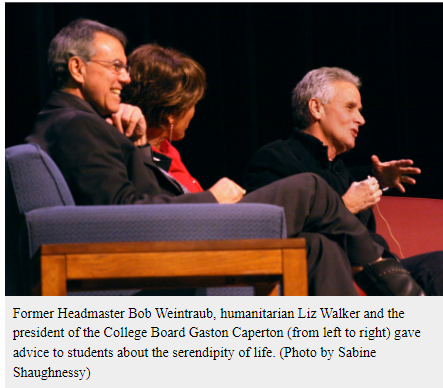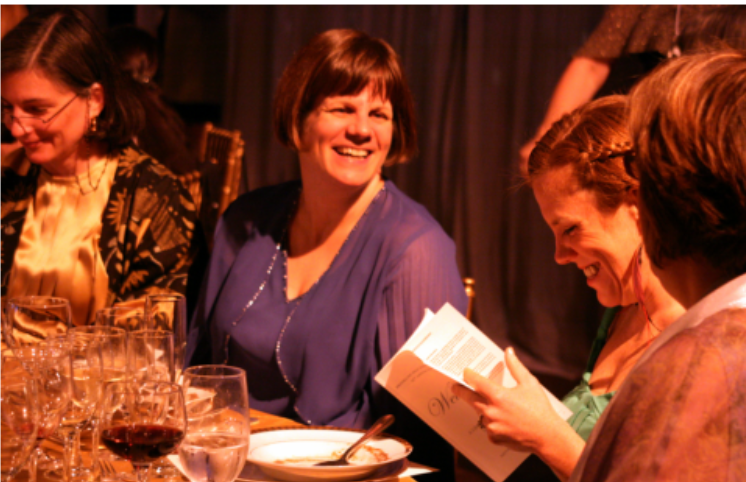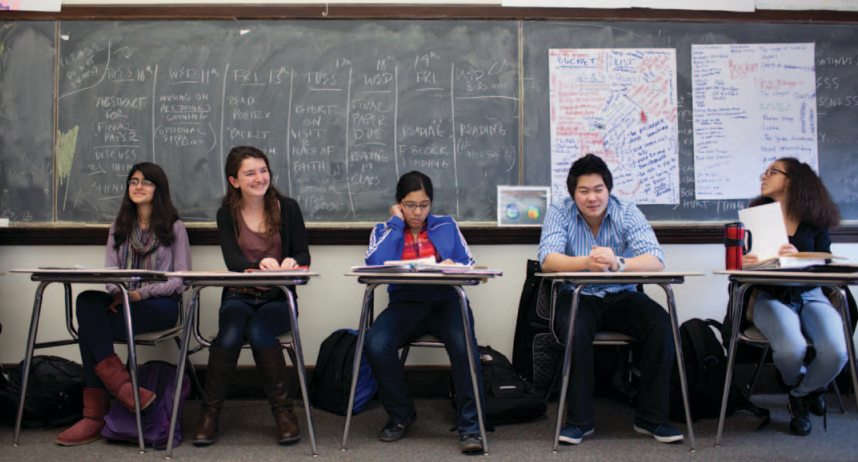
“I am going to college because of the Brookline High School Tutorial. The program saved my academic life; it’s as simple as that.”
— Danny
A Massachusetts high school demonstrates that a mainstream academic support program for students with mild learning problems can help motivate students to learn and improve their academic performance as well as promise long-term financial savings at a time when special education budgets are increasing dramatically.
refocused and distracted, Danny was diagnosed with a learning disability during middle school. That diagnosis meant that Danny was placed in the special education program when he enrolled as a student at Brookline High School in suburban Boston, Massachusetts. By his sophomore year, he was struggling to pass his courses and complained to his mother that he was unhappy with being in the high school’s learning center for special education students.
JULIE JOYAL MOWSCHENSON is a teacher, vice chair of the 21st Century Fund at Brookline High School and director of the Premedical Summer Institute at Harvard Medical SchooL ROBERT J. WEINTRAUB is a teacher, headmaster of Brookline High School and trustee of the College Board
“I didn’t have a learning disability, “he says. “I just couldn’t focus, and didn’t know why.” In 2002, during his junior year, his mother enrolled him in Brookline High School’s new Tutorial Program, an alternative to the more traditional special education learning center. The Tutorial serves students with learning disabilities, replacing conventional special education support with academic guidance from regular classroom teachers. Tutorial students meet daily with a team of two teachers — usually one from the humanities and the other from math/science – in a regular C-block class. Meeting with regular academic teachers allows students like Danny to escape the stigma often associated with special education. These students have greater access to the general curriculum, prepare for the state-mandated standardized test required for graduation, and feel more like an integral part of the mainstream school community. While enrolled in the program, Danny’s confidence and performance improved, and he made honor roll for the first time. He has already been on the dean’s list for three semesters in college.
Educators’ initial sense that too many students were being diagnosed with learning disabilities led to the creation of Brookline’s innovative Tutorial Program in 2002. The Tutorial offered an alternative to a system that was stigmatizing too many students and costing too much money. Brookline High Schools is now better able to address the needs of students defined as special education students by moving them into a mainstream academic support program. At the same time, the program offers teachers a new, inspiring, and reinvigorating means of interacting with students and sharing their love of the subjects they teach. Parents also see the positive effects in their children’s intellectual self-confidence and their ability to succeed in mainstream academics.
The Tutorial corrected a system that was stigmatizing too many students and costing too much money.
At BHS, over 100 students have left special education for the Tutorial. As the Tutorial becomes more established in the school, this promises a long-term shift in moving special education dollars into the regular education budget.
In recent years, many students have been diagnosed with disabilities because this was too often the only way they could receive academic support services. BHS psychologists reported, for instance, that they were at times ambivalent about diagnosing disabilities. In order to receive an Individual Education Plan (IEP), a student must have a diagnosed disability and must not be making “effective progress” in school. Students might well need assistance, but not necessarily “specialized instruction” provided by special education staff. The psychologists wanted to help these students and thus recommended special education services. The psychologists also reported that they felt pressure to recommend IEPs so that students could receive accommodations on standardized tests like the SAT (Miranda and Goldberg 2003). This dynamic is especially prevalent in more affluent communities where there is intense competitive pressure among students and their parents. As a result, the number of students on IEPs and 504 Plans is large and growing.
Educators, policy makers, scholars, and practitioners have long debated the most effective way to educate special needs students, both in financial and academic terms. Since the 1997 reauthorization of the Individuals with Disabilities Education Act (IDEA), a consensus has been growing that students are best and most efficiently served by having access to the mainstream general education curriculum. As the National Center for Educational Restructuring and Inclusion has found, students with disabilities in inclusive, integrated classrooms show academic gains in a number of areas, including improved performance on standardized tests, mastery of IEP goals, higher grades, on-task behavior, and increased motivation to learn. They also show better postgraduation outcomes, such as employment, postsecondary education, and income. Research shows that the benefits of inclusive classrooms reach beyond the academics, allowing children who are mainstreamed to feel that they are part of the community instead of being segregated from their peers (Hehir 2006).
HOW IT WORKS
The idea for the Tutorial Program originated in a visit to Oxford University in 2002. As the headmaster of a large urban-suburban high school, Robert Weintraub (one of the authors) was impressed by the content-based tutorial style of teaching at Oxford and felt that, with some adaptation, a tutorial could be a powerful model for helping students who struggle academically. During the Oxford visit, Weintraub envisioned an alternative and effective way to support students, allowing them to succeed academically in the mainstream, alleviating the stigma commonly associated with special education, reducing paperwork, increasing teacher morale, and saving the district money over time.
The BHS Tutorial establishes teams of two academic teachers, pairing a teacher from the humanities with one from mathematics or the sciences. Each two-person team is assigned 10 students for the school year, matching student needs with teacher strengths. The students meet with their Tutorial teachers for one, 50-minute period. Teachers monitor the students’ academic lives as they help students set goals, establish benchmarks, focus on content in specific academic areas, check in with the students’ other teachers, and communicate with parents. Students receive one academic credit for the course.
Another important ingredient in the Tutorial recipe is the availability of teachers beyond the two on a student’s team. If, for example, a student needs to prepare for a test in a world language and there is no world language teacher on the student’s Tutorial team, the student can go to an adjacent room where a world language teacher is available. Six Tutorial teachers are available during each instructional block.
RADICAL CHANGE
The Tutorial Program represents a radical change in the structure and organization of the school. With increasing interest in educating students with disabilities in inclusive settings and with federal requirements mandating that all students achieve high academic standards, BHS identified an opportunity to restructure its approach to special education. The Learning Center provides “specialized instruction” for students with mild learning disabilities. It is a skill-based program in which certified special education teachers follow each student’s IEP and tailor the curriculum accordingly.
This change was fueled by our growing sense that too many students were being diagnosed with learning disabilities and our skepticism about the efficacy of “specialized instruction” for students with mild learning issues. Before the Tutorial Program, there was no formal instructional support — outside of special education — during the school day for students struggling with subject-specific issues. Parents often expressed concern about this. While appreciating the excellent work done by the special educators in the learning centers, students and parents asked for help in the content areas that defined the heart of a strong academic high school: math, science, world languages, English, and history. They wanted teacher/tutors to preview their academic work and to reinforce the instruction of their classroom teachers. Content specialists were not available in the Learning Center, as is the case at most public high schools.
It became dear, in short, that many students needed content-based support. The fundamental innovation of the BHS Tutorial, therefore, is that it stresses subject-specific support rather than generalized “study skills and learning strategies.” If a student needs help in Spanish, the Tutorial will get them a Spanish teacher; if he needs help in science, Tutorial gets him a science teacher.
FUNDING THE PILOT
But how can a public high school, with always constrained budgets, spend $150,000 to launch a new pilot program, paying eight Tutorial teachers, a program leader, and researchers? Innovation requires venture capital.
Brookline is fortunate to have the BHS 21st Century Fund, a nonprofit organization founded in 1998 by a dedicated group of alumni, parents, educators,and philanthropic members of the community, which provided the funds. “Our goal is to serve as a sustainable source of funding for innovative programming at the high school. We are a venture capital fund that supports and helps facilitate local solutions to national challenges in public education,” said Tony Friscia, the fund’s chair.
The fundamental innovation of the Tutorial, therefore, is that it stresses subject-specific support rather than generalized “study skills and learning strategies.”
The 21st Century Fund enables BHS to explore bold, pioneering programs that address the challenges confronting public education nationwide. BHS is the perfect place to try new ideas, an ideal laboratory for innovation. Our students represent 76 nations and a full spectrum of racial, ethnic, and socioeconomic groups. Not unlike other large diverse high schools, many BHS students achieve at high levels, while others struggle. Supporting high achievement across the spectrum of the student body is a fundamental expectation of public education and a critical goal of the fund.
The investments of the fund have met with an impressive return, financially, academically, and professionally. Even in an area as seemingly inconsequential as paperwork, for example, the Tutorial Program has made a significant impact. Millions of dollars are spent each year in this country on documentation to comply with current special education regulations. Problems with paperwork can result in lawsuits. In addition, paperwork places a heavy burden on teachers who already have too little time to devote to students. Special education teachers spend on average five hours a week completing forms and administrative paperwork, about the same amount of time they spend preparing lessons. Many special education teachers feel the job now requires “a Ph.D. in paperwork” (Shorr 2006).
In addition to its immediate benefits for students, therefore, the Tutorial also addresses the issue of teacher retention and recruitment by providing new professional opportunities. Participating in the Tutorial involves time and commitment on the part of the teachers, but the Tutorial work is different from work associated with teaching regular classes and therefore provides welcome variation. Teachers also appreciate the opportunity to work closely and develop strong relationships with a small group of students. Finally, they enjoy the opportunity to develop collegial relationships with staff from other departments. In part, because of the Tutorial Program, teacher attrition at BHS is one-third the national average.
The Tutorial experience also has a positive effect on teachers’ course loads, enabling them to teach four regular classes instead of five; the fifth assignment is the Tutorial. For teachers, this is a major improvement in their working conditions and an important change in their professional responsibilities. With five classes, they were responsible for about 100 students — planning and preparing for classes, correcting and grading student papers, providing extra help, interacting with colleagues about the students they share, communicating with parents, and teaching classes. Teachers spend at least 15 minutes a week grading papers for each student they teach. For the 20 students in the fifth class, that saves about five hours of work each week.
Teachers’ responses to the Tutorial have been enthusiastic. “I think the Tutorial is one of the most successful programs at BHS. It provides students with content-based tutoring within a formal structure,” said one history teacher. `All teachers provide kids with ‘extra help,’ but that is so much more difficult to schedule during a busy school day. The magic of the Tutorial is that we see the kids every day for an hour for thisvery important supplementary academic support.”
A math teacher said, “The Tutorial experience has been enriching because it has given me a greater sense ofwhat the whole school is about, rather than just my subject. I find it interesting to see what the students are working on, and I find it fulfilling intellectually.”
In addition to students and teachers, parents constitute a third group that has voiced its enthusiastic support for the Tutorial Program. This is important, not least because educators understand that parents are an essential constituency. Parents have reported a positive effect on their children’s academic self-confidence. The Tutorial has helped de-stigmatize students’ learning problems. “All Oliver wanted was to go mainstream,” said the mother of the graduating senior. “He did not want to be in a `Sped’ or special education program. He found that demoralizing.”
Another parent reported that her daughter had been “totally disorganized.” The Tutorial helped her become organized without the extensive testing and labeling associated with special education. “The Tutorial experience really put all her pieces together and saved her. She established strong relationships with her Tutorial teachers, and she would not have graduated from high school without the support of the program.” Parents are also appreciative that the program saves them money on private tutoring.
EVALUATING THE TUTORIAL
External evaluators from the Harvard Graduate School of Education found that Tutorial students improved their grades, test scores, academic self-confidence, and organizational skills as much or more than students from the traditional special education learning center. The evaluation done in 2004 concluded that the direct academic support from content teachers was a contributing factor to the higher grades of these students and that the Tutorial Program “constitutes a compelling alternative to the more traditional approaches to special education — and offers effective ways of addressing many of the issues that continue to frustrate special education programs in a public school setting” (Hehir et al. 2004).
The evaluation focused on 80 randomly selected students, 40 who remained in the special education learning center and 40 who joined the Tutorial. Evaluators examined student academic performance, looking at four academic measures — state assessment scores, PSAT scores, SAT scores, and grades. They also looked at qualitative differences in the two programs. They collected data from classroom observations, teacher interviews, student focus groups, parent surveys, current and previous IEPs and 504 plans of students, as well as student transcripts.
“The magic of the Tutorial is that we see the kids every day for an hour for this very important supplementary academic support.”
In an interview after completing his study, evaluator Thomas Hehir reiterated his sense of the success of the program. “The BHS Tutorial is based on the premise that what these kids really need is high-quality instruction by teachers who have the content knowledge. All school districts struggle to improve the academic performance of disabled kids. It is critical to give students real solutions that have a high degree of promise… we have found this solution in the Tutorial Program at BHS,” he said.
The Tutorial Program had only 40 students when it was launched in 2002. Now, Tutorial has more than 200 students and is fully supported by the high school budget. When the Tutorial began six years ago, 260 students were enrolled in the learning center; today that number has dropped to 160 students. Tutorial’s growth — after it was validated — required a shift in funding from the venture capital of the 21st Century Fund to the budget of the Brookline Public Schools. Instead of creating a burden on the school budget, the Tutorial Program gave the school greater flexibility in allocating resources and actually reduced the special education budget. There were eight Learning Center teachers before the Tutorial; now there are five, a movement of $150,000 from the special education to regular education budget.
In Brookline, the school budget for special education has been steadily increasing. Between 2002 and 2007, the special education funding went from $10 million, or 20% of the school budget, to almost $16 million, or 25%. The Tutorial Program is a legitimate and compelling alternative to special education for many students. Over time, as more and more students and parents choose the Tutorial, fewer students will be enrolled in special education. That is already the case at BHS, where almost 100 students have left special education for the Tutorial. Funds have moved from special education to regular education. Over time, with fewer students in special education, the “special education bureaucracy” — staff that does the testing, conducts the IEP meetings, and spends hours on paperwork — will shrink, providing a real savings for the school budget.
Researchers have validated our belief that students with mild learning issues benefit more from subject-based tutoring by regular education teachers than from special instruction by certified special education teachers. This conclusion has revolutionary implicadons for all public schools because these effects need not be unique to Brookline High. Schools across the country can implement similar programs with equal success. Ultimately, the Tutorial is surprisingly simple: It asks regular classroom teachers to tutor kids who have a variety of learning needs. And it works.
- Hehir, Thomas. New Directions in Special Education: Eliminating Ableism in Policy and Practice. Cambridge, Mass.: Harvard Education Press, 2006.
- Hehir, Thomas, Allison Gruner, Joanne Karger, and Lauren Katzman. “Brookline High School Tutorial Program: Year 2 Evaluation Report.” Manuscript, Harvard School of Education, August 16, 2004.
- Miranda, Helena, and Arnie L. Goldberg. “Brookline Tutorial Program Evaluation Report for the 2002-2003 Academic Year.” Manuscript, Boston College, September 3, 2003.
- Shorr, Pamela Wheaton. “Special Ed’s Greatest Challenges and Solutions.” District Administration 42 (May 2006): 48-53.
Beyond Special Education: A New Vision of Academic Support
By Julie Joyal Mowschenson and Robert J. Weintraub
Phi Beta Kappa. Downloaded from SagePub.com





